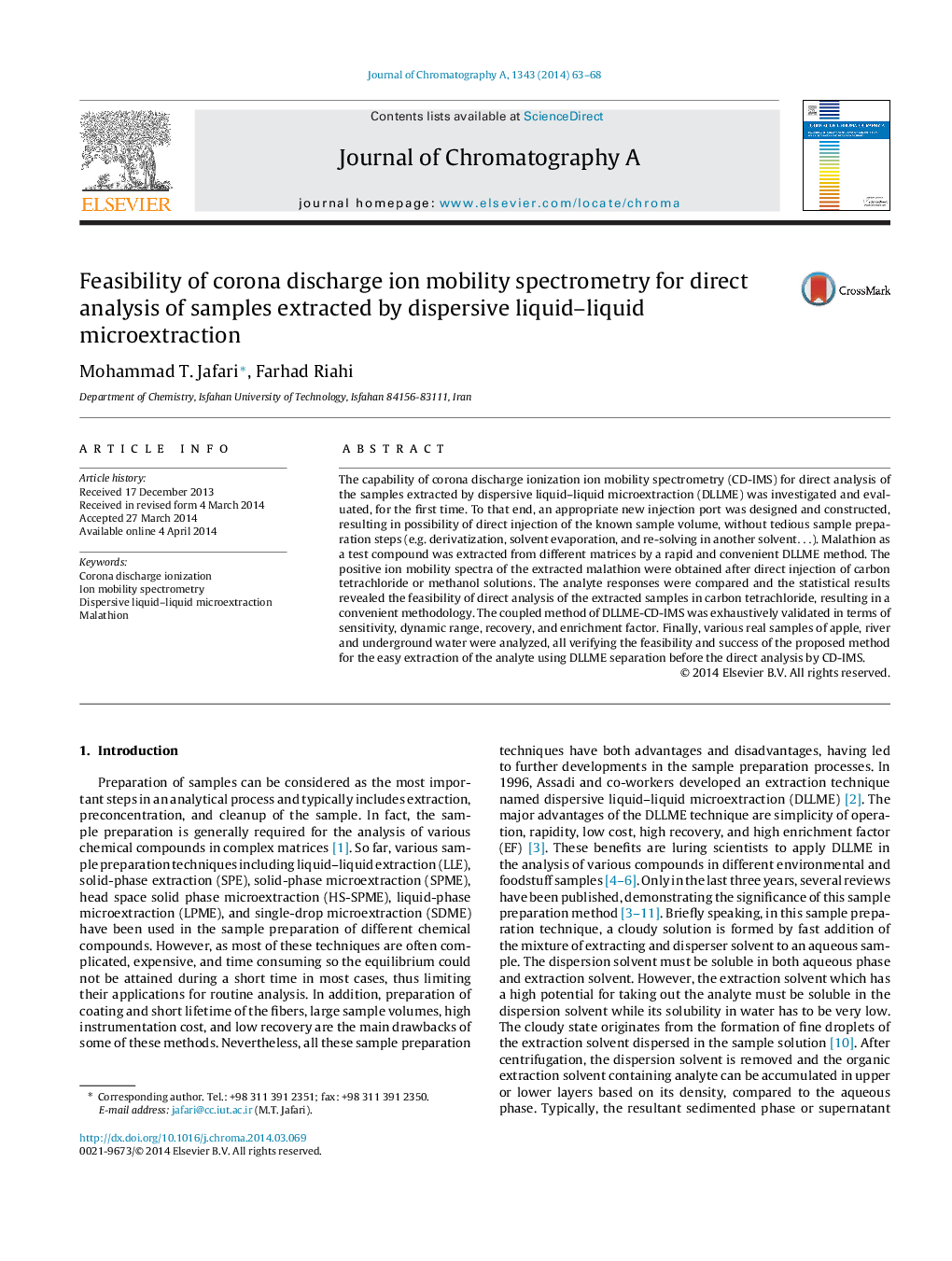| Article ID | Journal | Published Year | Pages | File Type |
|---|---|---|---|---|
| 1200051 | Journal of Chromatography A | 2014 | 6 Pages |
•Dispersive liquid–liquid microextraction was directly coupled with positive CD-IMS for the first time.•Very fast and convenient screening of chemical compounds by the developed method is expected.•Direct analysis of analyte without tedious sample preparation steps such as derivatization, solvent evaporation, and re-solving in another solvent was accomplished.
The capability of corona discharge ionization ion mobility spectrometry (CD-IMS) for direct analysis of the samples extracted by dispersive liquid–liquid microextraction (DLLME) was investigated and evaluated, for the first time. To that end, an appropriate new injection port was designed and constructed, resulting in possibility of direct injection of the known sample volume, without tedious sample preparation steps (e.g. derivatization, solvent evaporation, and re-solving in another solvent…). Malathion as a test compound was extracted from different matrices by a rapid and convenient DLLME method. The positive ion mobility spectra of the extracted malathion were obtained after direct injection of carbon tetrachloride or methanol solutions. The analyte responses were compared and the statistical results revealed the feasibility of direct analysis of the extracted samples in carbon tetrachloride, resulting in a convenient methodology. The coupled method of DLLME-CD-IMS was exhaustively validated in terms of sensitivity, dynamic range, recovery, and enrichment factor. Finally, various real samples of apple, river and underground water were analyzed, all verifying the feasibility and success of the proposed method for the easy extraction of the analyte using DLLME separation before the direct analysis by CD-IMS.
